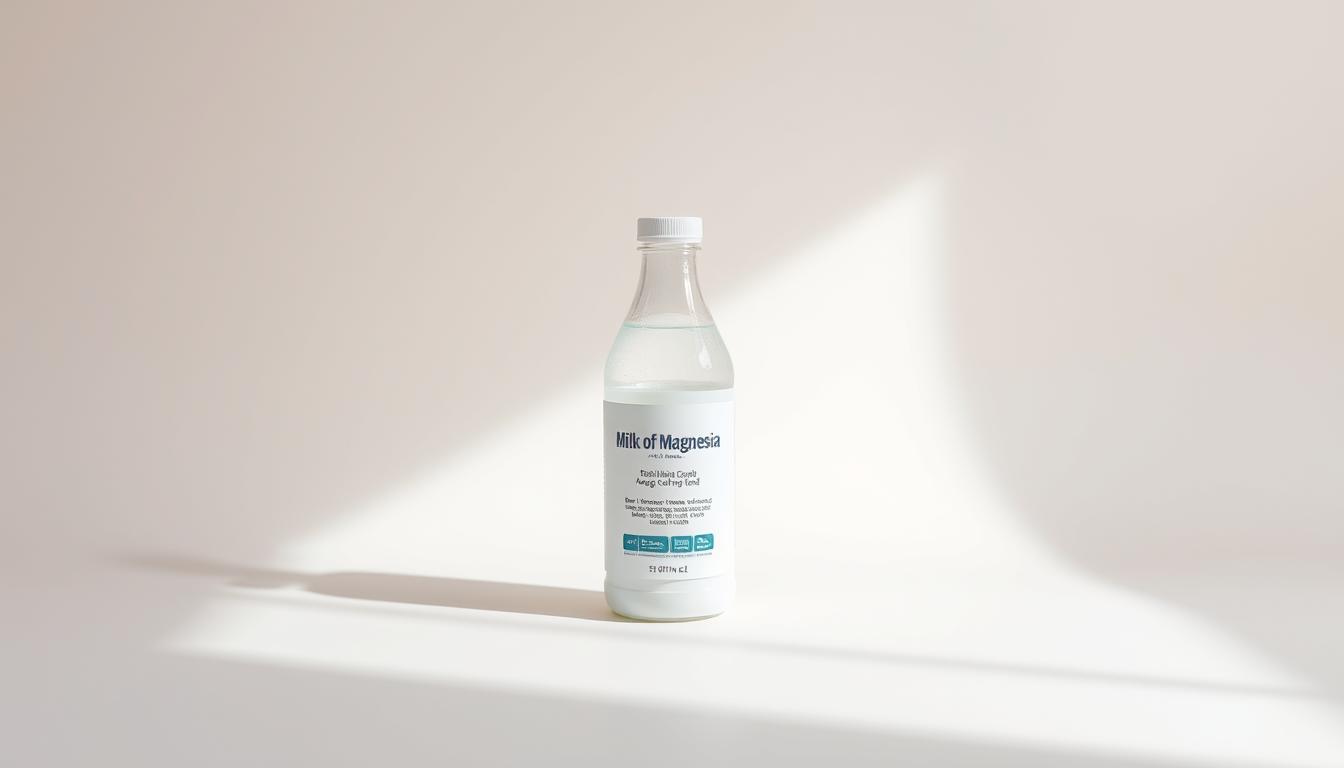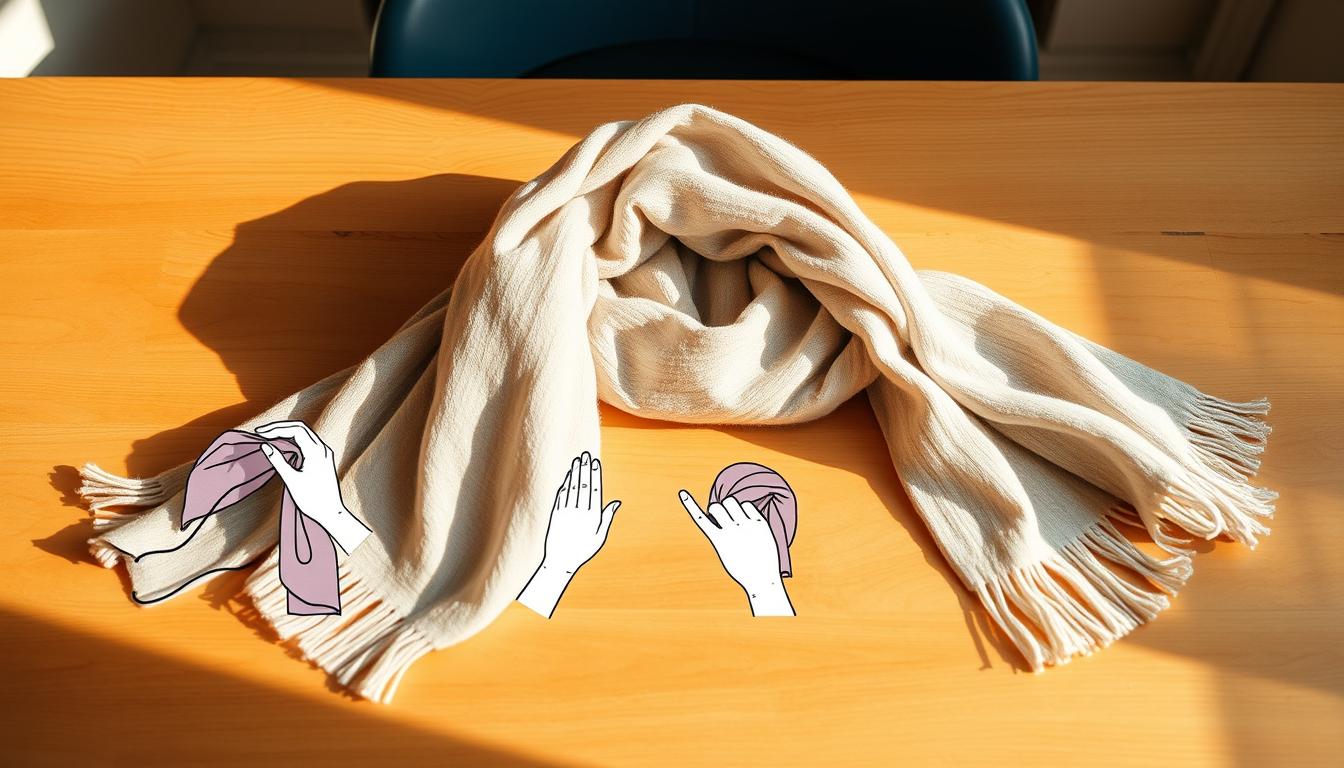Explore the world of compression socks, a game-changer in legwear. These innovative socks are changing how we think about comfort, health, and performance. They offer surprising benefits for your body and lifestyle.
Compression socks are more than just clothes. They’re made to support your body, improve blood flow, and boost performance. They help athletes, professionals, and anyone wanting better leg health. These socks reduce muscle fatigue and prevent swelling.
They’re great for runners, healthcare workers, or anyone wanting better leg health. Compression socks are a versatile solution. They offer many benefits, making them essential for comfort and performance.
Key Takeaways
- Compression socks provide targeted support for improved circulation
- Suitable for athletes, professionals, and individuals with specific health needs
- Helps reduce muscle fatigue and prevent swelling
- Scientifically designed for optimal performance and comfort
- Versatile accessory with multiple health and lifestyle benefits
Understanding What Compression Socks Do
Compression socks are more than tight leg wear. They improve blood flow and support leg health. They show how medical engineering can help circulation and support.
Compression socks work by applying pressure to your legs. This pressure helps blood flow from your feet to your heart.
The Science Behind Compression Technology
Compression technology is based on managing blood flow. These socks use elastic materials for a specific pressure gradient:
- Tightest at the ankle
- Gradually decreasing pressure up the leg
- Helps push blood back to the heart
How Graduated Compression Works
Graduated compression creates a dynamic pumping effect. It helps:
- Reduce blood pooling in lower legs
- Prevent swelling
- Support blood flow back to the heart
Different Compression Levels Explained
Compression levels range from mild to medical-grade. Knowing these levels helps pick the right sock:
| Compression Level | mmHg Range | Typical Use |
|---|---|---|
| Mild | 8-15 mmHg | Daily wear, light support |
| Moderate | 15-20 mmHg | Travel, mild swelling prevention |
| Firm | 20-30 mmHg | Athletic recovery, medical conditions |
The History and Evolution of Compression Socks
Compression socks have a long and interesting history. They’ve moved far from their early uses. Today, they serve many purposes, from medical to athletic.
The idea of using pressure to help blood flow dates back to ancient times. Doctors in Egypt and Greece used bandages to help with swelling and healing. Early medical practitioners used bandages to reduce swelling and support healing.
- 1840s: First elastic stockings developed
- 1950s: Medical professionals begin recommending compression garments
- 1980s: Athletes discover performance benefits
- 2000s: Fashion and functionality merge
Over time, the reasons to wear compression socks grew. They started as a medical tool for those with circulation problems. Now, they’re a key part of many people’s lives.
Today, compression socks are a mix of technology and style. They’re not just for medical use anymore. Runners, travelers, and people who stand a lot also use them.
New technologies have made compression socks better. They’re now more comfortable and breathable. The materials and design help support the body in the right places.
Key Benefits of Wearing Compression Socks
Compression socks are more than just a fashion accessory. They offer health benefits that can change how you feel and perform. Athletes and office workers alike find them great for swelling and leg health.
Let’s look at the top benefits of compression socks. They are a game-changer for your wellness routine:
Improved Blood Circulation
Compression socks are great for blood flow. They apply gentle pressure to your legs. This helps:
- Promote better blood circulation
- Reduce blood pooling in lower extremities
- Minimize leg fatigue and discomfort
Reduced Swelling and Inflammation
For those with swelling, these socks are a miracle. They help:
- Decrease leg and ankle swelling
- Reduce inflammation after intense physical activity
- Support lymphatic drainage
| Compression Level | Swelling Reduction | Recommended Use |
|---|---|---|
| Mild (8-15 mmHg) | Low | Daily wear, light activity |
| Moderate (15-20 mmHg) | Moderate | Travel, mild medical conditions |
| Firm (20-30 mmHg) | High | Significant swelling, medical recovery |
Prevention of Deep Vein Thrombosis
Serious health protection is another amazing benefit. They prevent dangerous blood clots by:
- Maintaining consistent blood flow
- Reducing venous pressure
- Supporting healthy circulation during extended periods of sitting
Compression socks are great for athletes, travelers, or anyone wanting better leg health. They offer a simple yet powerful solution to many wellness challenges.
Who Should Use Compression Socks?
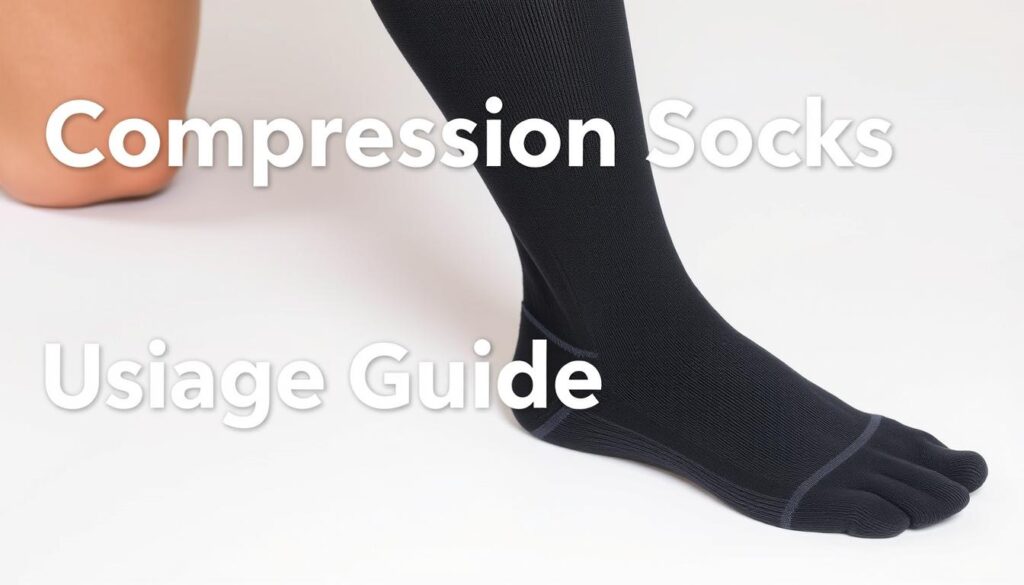
Compression socks aren’t just for one group. They help many people feel more comfortable and support their health.
Several groups can really benefit from wearing compression socks:
- Healthcare Professionals: Nurses work long hours on their feet. Compression socks help them avoid leg fatigue and swelling.
- Athletes and Fitness Enthuisiasts: Runners, cyclists, and others use them to boost performance and aid in muscle recovery.
- Travelers: Long flights or sitting for a long time can lead to blood clots. Compression socks can help prevent this.
Wearing compression socks isn’t just for certain jobs. People with health issues, pregnant women, and those recovering from surgery can also find relief.
Some groups that might benefit include:
- Office workers who sit a lot
- Pregnant women with leg swelling
- People with circulation problems
- Those with varicose veins
In short, compression socks are a versatile solution for many health and comfort needs. They can improve circulation, reduce muscle fatigue, and prevent swelling. So, there’s a good reason to add them to your wardrobe.
Compression Socks for Athletes and Runners
Athletes and runners are finding out how great compression socks are. These socks have changed the game for sports fans. They offer support and help improve performance.
Compression socks for runners are made to help athletes perform better. They support muscles, improve blood flow, and cut down on fatigue. This makes a big difference in how well you do during sports.
Performance Enhancement Benefits
- Increased oxygen delivery to muscles
- Enhanced muscle stabilization during exercise
- Reduced muscle vibration and possible strain
- Improved overall athletic performance
Recovery and Injury Prevention
Athletes use compression socks to recover faster and avoid injuries. Strategic compression reduces muscle soreness and helps muscles heal quicker after hard workouts.
| Compression Level | Athletic Purpose | Recommended Use |
|---|---|---|
| 15-20 mmHg | Light Training | Daily workouts, mild support |
| 20-30 mmHg | Intense Training | Marathon runners, high-intensity sports |
| 30-40 mmHg | Professional Athletes | Advanced recovery, medical-grade support |
Choosing the Right Athletic Compression Wear
Finding the right compression socks is key. Think about your sport, how hard you train, and what feels comfortable to you.
- Measure your calf circumference accurately
- Determine your primary athletic goals
- Select appropriate compression level
- Choose moisture-wicking materials
- Prioritize comfort and fit
Investing in good compression socks can really help your performance and recovery. Whether you’re a pro runner or just enjoy working out, these socks are a big help.
Medical Applications and Health Benefits
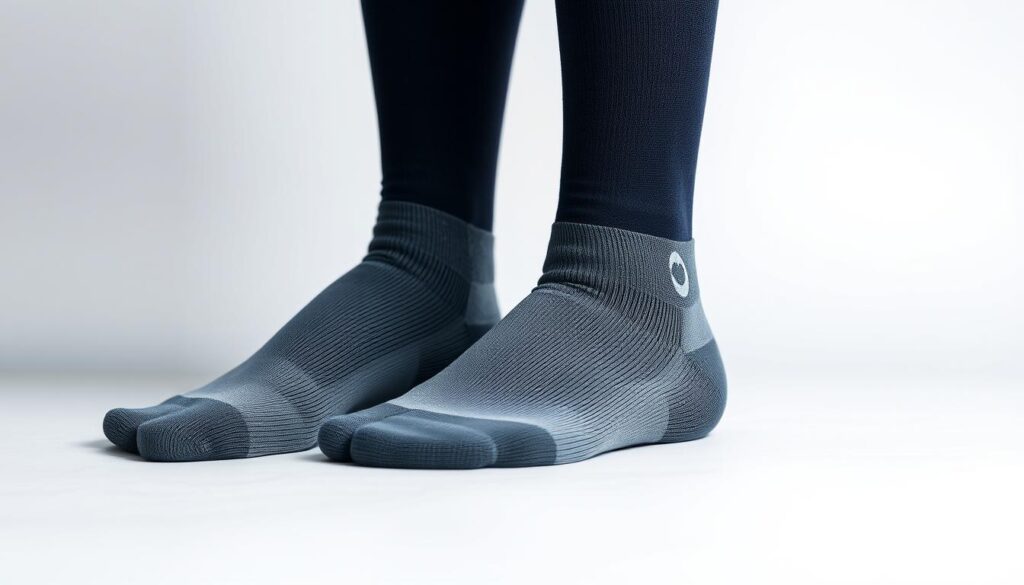
Compression socks are more than just fashion. They are a powerful medical tool with many health benefits. These special socks offer critical support for different medical conditions and help improve circulation.
Medical experts see many uses for compression socks in healthcare:
- Support after surgery
- Helping with chronic venous insufficiency
- Stopping blood clots when you can’t move much
- Managing lymphedema
These socks help people with poor circulation. They apply pressure to help blood flow better from the legs to the heart.
Doctors often suggest compression socks for:
- Varicose veins
- Diabetes-related circulation problems
- Pregnancy swelling
- Chronic leg pain
Compression socks for circulation use graduated pressure. The pressure is strongest at the ankle and gets weaker up the leg. This design helps blood move up, reducing swelling and preventing blood pooling.
Medical studies keep showing how useful compression socks are. They have become key tools for managing health.
Compression Socks for Professional Use
Many professionals are finding out how great compression socks are. They make work more comfortable and healthier. They help those who stand or sit for long hours.
Compression socks are a big help for nurses. They offer much-needed support during tough shifts.
Healthcare Workers: A Critical Need
Nurses face a lot of physical challenges at work. Wearing compression socks can help a lot. They:
- Reduce leg fatigue and swelling
- Help prevent varicose veins
- Boost circulation
- Lessen muscle soreness
Office Worker Solutions
People who sit a lot can really benefit from compression socks. Sitting for too long can hurt circulation. These socks are a must-have for the office.
| Profession | Compression Sock Benefits |
|---|---|
| Nurses | Reduced leg fatigue, improved circulation |
| Office Workers | Prevent blood pooling, reduce swelling |
| Flight Attendants | Minimize leg discomfort during long flights |
Travel Industry Applications
Professional travelers know how important comfort and health are. Compression socks help keep legs healthy on long flights or trips.
Getting good compression socks is a smart move for anyone wanting to stay healthy and perform well at work.
How to Choose the Right Compression Level
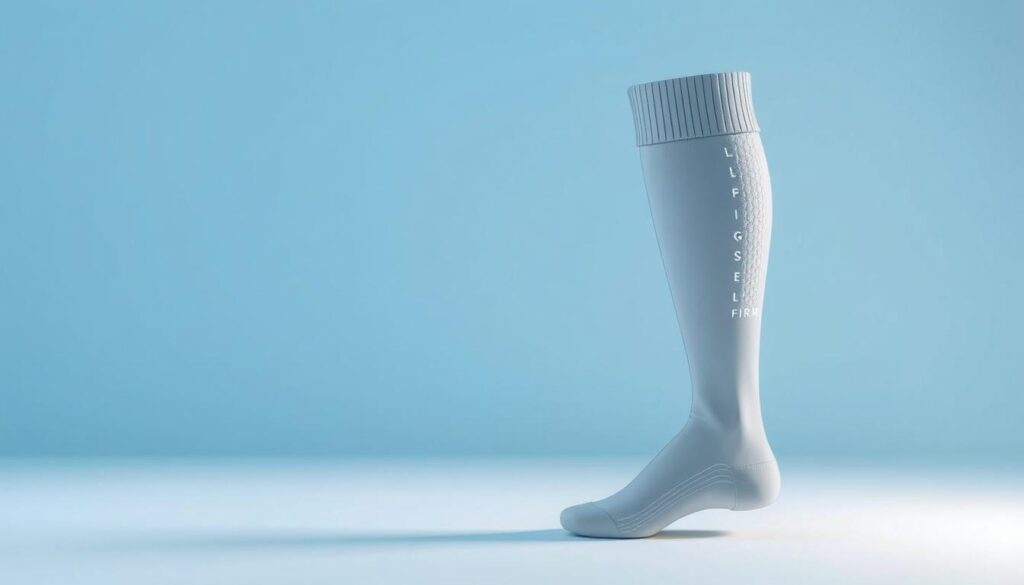
Understanding compression socks means knowing the right level for you. The level is measured in millimeters of mercury (mmHg). This shows how much pressure the socks put on your legs.
Finding the right compression level can be hard. But we’re here to guide you. The effect of compression socks depends on the pressure level you pick.
- Mild Compression (8-15 mmHg)
- Best for daily wear
- Provides light support
- Ideal for mild leg fatigue
- Moderate Compression (15-20 mmHg)
- Great for travelers
- Helps prevent swelling
- Suitable for pregnant women
- Firm Compression (20-30 mmHg)
- Recommended for athletes
- Supports recovery
- Helps manage more serious circulation issues
Our guide will help you choose wisely:
| Compression Level | Best For | Typical Use |
|---|---|---|
| 8-15 mmHg | Everyday comfort | Mild leg fatigue, light support |
| 15-20 mmHg | Travel and prevention | Swelling prevention, light medical support |
| 20-30 mmHg | Athletic performance | Intense physical activity, recovery |
| 30-40 mmHg | Medical treatment | Severe circulation issues, post-surgery |
Pro tip: Always talk to a doctor before choosing high-compression socks. They can give advice based on your health.
Proper Fitting and Sizing Guide
Finding the right fit for compression socks is key to better athletic performance and comfort. Whether you’re looking for the best compression socks for athletes or specialized ones for runners, getting the size right is essential.
Proper sizing ensures your compression socks offer the best support without causing discomfort or limiting blood flow. The wrong fit can reduce the effectiveness of these performance-enhancing garments.
Measuring for the Perfect Fit
To find your ideal compression sock size, follow these essential steps:
- Measure your ankle circumference at the narrowest point
- Measure your calf at its widest point
- Check your shoe size and height
- Consult the manufacturer’s specific sizing chart
Common Sizing Mistakes to Avoid
Athletes often make critical errors when selecting compression socks. Here are the most common pitfalls:
- Guessing your size instead of taking precise measurements
- Overlooking the importance of length and compression level
- Choosing socks that are too tight or too loose
- Ignoring individual brand sizing variations
Pro tip for runners and athletes: Always try on compression socks before a major event. The right fit should feel snug but not restrictive, providing graduated compression that supports muscle recovery and enhances performance.
Caring for Your Compression Socks
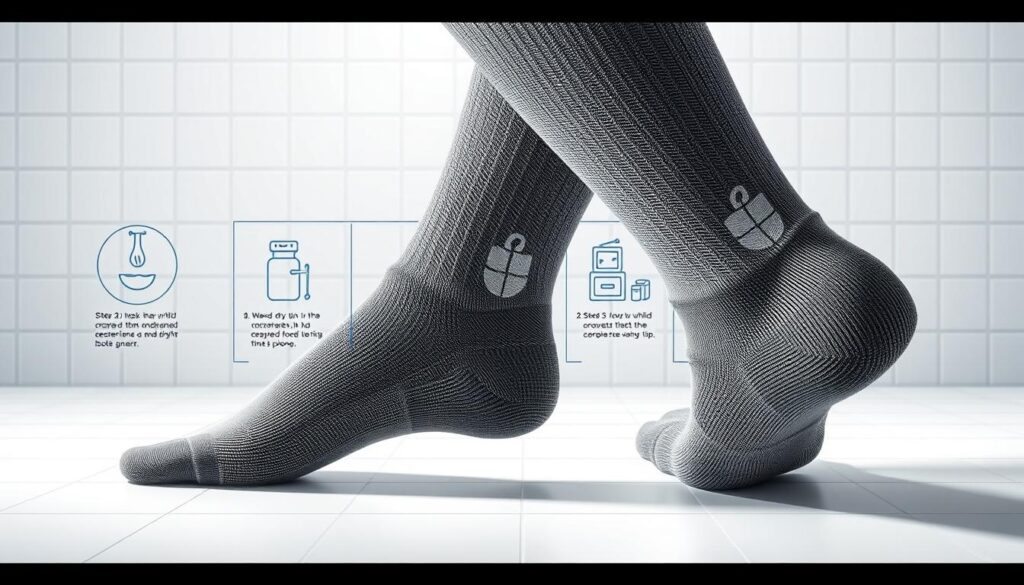
Compression socks are a big deal for your health and performance. They help improve blood flow. To keep them working well, you need to take good care of them.
Washing your compression socks needs extra care. They’re not like regular athletic wear. They need a softer touch to keep their special compression technology.
- Wash in cool or lukewarm water (never hot)
- Use mild, fragrance-free detergent
- Hand wash or use delicate machine cycle
- Avoid fabric softeners and bleach
Compression socks are great for your circulation and muscle recovery. But, they only work well if you take care of them. Proper drying is just as important as washing.
- Air dry flat away from direct heat
- Never use a dryer
- Avoid direct sunlight
- Reshape while damp to maintain compression
Where you store your socks is important too. Keep them in a cool, dry spot. Roll them gently to avoid stretching or damaging the elastic fibers.
With the right care, your compression socks will keep supporting you. They’ll help you perform better and feel better too.
Common Myths About Compression Socks
Compression socks are popular, but many people don’t know the truth about them. We aim to clear up these misconceptions. This way, you can see the real advantages of wearing compression socks.
Let’s look at some common myths about compression socks. We’ll find out what science really says about these garments.
Debunking Popular Misconceptions
- Myth: Compression socks are only for elderly or sick people
Reality: Athletes, travelers, and workers in many fields also use compression socks. They offer benefits beyond just for health reasons.
- Myth: Compression socks will make your legs weak
Studies show that compression socks help muscles recover and improve blood flow. They don’t make you weak.
- Myth: All compression socks are the same
There are different levels of compression. Each has its own purpose, from light support to serious medical use.
Scientific Evidence and Studies
Research has shown the real benefits of compression socks in many areas:
| Research Area | Key Findings |
|---|---|
| Athletic Performance | Less muscle fatigue and quicker recovery |
| Medical Applications | Helps prevent deep vein thrombosis and reduces swelling |
| Workplace Ergonomics | Boosts blood flow for those who stand a lot |
Our knowledge of compression socks keeps growing, thanks to scientific studies. Don’t let myths stop you from trying out the benefits of compression socks.
When to Wear Compression Socks
Compression socks are great for many activities and lifestyles. Knowing when to wear them can help a lot. They can improve circulation and reduce swelling.
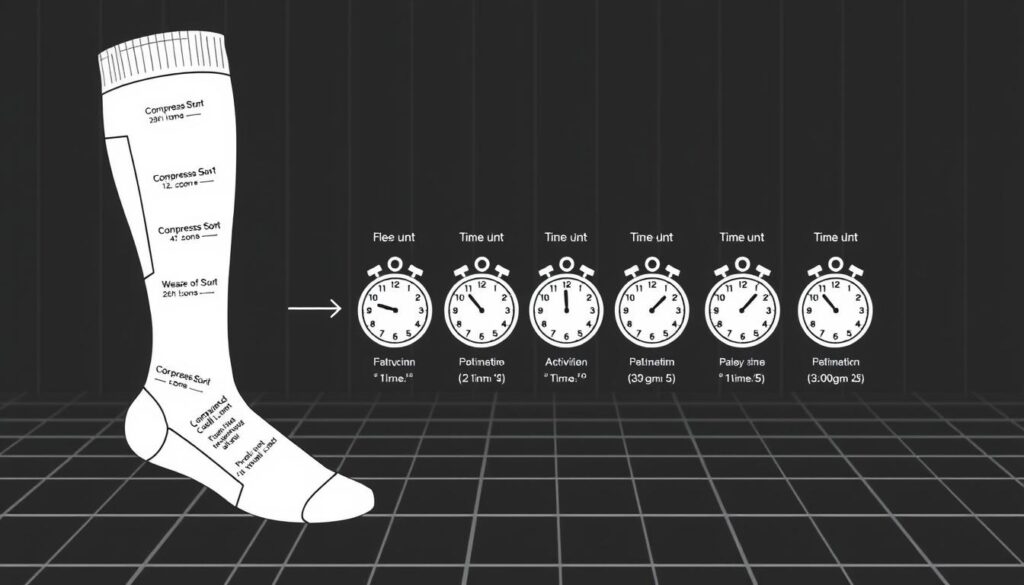
- During Long Flights: Prevent blood clots and reduce leg swelling
- For Athletes: Enhance performance and speed recovery
- At Work: Improve circulation for desk-bound professionals
- During Pregnancy: Manage leg discomfort and reduce swelling
- Post-Surgery: Support healing and minimize inflammation
Wearing compression socks at the right time is key. Athletes might wear them during tough workouts or right after. Office workers can wear them while sitting for long periods to keep blood flowing.
| Activity | Recommended Wear Time | Primary Benefit |
|---|---|---|
| Travel | During Flight | Prevent Blood Clots |
| Exercise | Before/After Workout | Muscle Recovery |
| Office Work | Throughout Workday | Improve Circulation |
Pro tip: Always check with healthcare experts. They can help find the best compression level and wear time for you.
Potential Side Effects and Precautions
Compression socks are great for many, but knowing their effects is key. They can have side effects and precautions to take. Everyone’s experience is different, so being informed is important.
Some people might feel mild side effects from wearing compression socks. The way they work can cause unexpected reactions. This is more common in people with sensitive skin or certain health issues.
- Skin Irritation: You might see redness or itchiness, mainly if you wear them for a long time
- Circulation Restrictions: The wrong size can cause discomfort
- Allergic Reactions: Some people might react to certain fabrics
People with certain health problems should talk to doctors before wearing compression socks. This includes those with peripheral neuropathy, severe peripheral artery disease, or skin infections. They might need special advice.
To stay safe, follow these important steps:
- Get a professional to measure you
- Pick the right compression level
- Take off socks if you feel too much discomfort
- Check your skin often for any changes
- Clean and take care of your socks right
By knowing the possible side effects and taking action, you can safely enjoy the benefits of compression socks.
Conclusion
Compression socks are more than just a simple accessory. They offer many benefits, going beyond traditional medical uses. They change how we view leg health and comfort.
These socks are great for athletes and professionals who are on their feet a lot. They provide support and comfort in unique ways.
There are many good reasons to wear compression socks. They help with blood flow, reduce swelling, and prevent health problems. They’re perfect for runners, travelers, and people with certain medical conditions.
By wearing compression socks, you’re taking care of your legs. It’s important to choose the right fit and level of compression. This ensures you get the most out of them.
Compression socks are a game-changer for your legs. They offer support, style, and protection. They’re a key part of taking care of your legs.
Try out compression socks and see the difference. Your legs will thank you. They’re a step towards better leg health and comfort.




